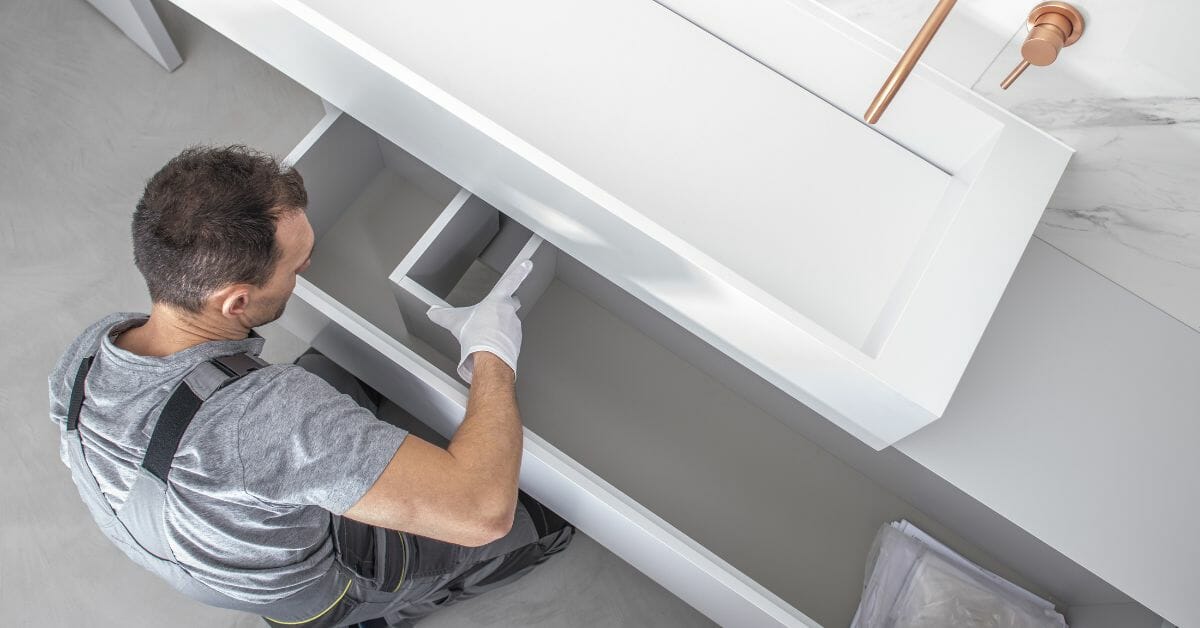Cabinets are mostly made from wood or wood-based materials. However, laminate and thermofoil are other materials that people use.
But you’ll see that most people go with the wood option. Why? Because wood is renewable and non-toxic, and also offers beautiful grain patterns and color variation, giving your kitchen a natural and elegant look.
It is the best cabinet surface to paint. Painting the inside of your cabinets is totally your decision. It is up to you. This article covers an overview of clear coats whether you should use a clear coat inside a cabinet, and why.
Can You Use Clear Coat Inside Cabinets?

All You Need to Know About Using Clear Coats.
What is a clear coat? It is a transparent layer of paint, the last coat of paint applied to a wooden surface. It has no pigment, so it doesn’t add color to your cabinet. It is typically applied after a colored coat to enhance the durability and shine of the colored paint.
There are four options for clear coating a wooden surface; varnish, sprayed lacquer, shellac, and wax. The varnish is the most commonly used because it is highly durable and gives your cabinets a glossy finish.
Acrylic varnishes (Polycrylic clear coat) and polyurethane varnishes are the most common types of varnishes.
Polyurethane offers both water and oil-based products, while polyacrylic is only water-soluble. While they both have their pros and cons, oil-based polyurethane is best for finishing wooden furniture. They can even be applied alone on wood. They function as good wood sealants.
Clear Coats Inside Cabinets
This is how the painting of cabinets works. First, there is a base coat, which sort of acts like a primer. It bonds the paintwork to the wood.
Then comes the layer of colored coat, and finally, the layer of clear coat, the topcoat. How thick you should apply it depends on the manufacturer and the surface to be painted.
Tip: If the colored coat has a glossy finish, a clear coat is unnecessary. After all, it is an optional coating that, besides preservation and protection purposes, also gives your cabinet a glossy look.
Can You Use Clear Coat Inside Cabinets?
Can you use clear coats inside cabinets? Basically, what a clear coat does is offer extra protection.
If your cabinets are going to see a lot of traffic and use, then you should seal them. If you’re not going to be removing and placing heavy objects consistently, and the items just sit there looking pretty, then it might not be necessary.
Now, another question commonly asked is, Should I paint the insides of your cabinets? If you can see the inside of your cabinet, closed or not, then you should paint it. That is, whether it’s open shelving or the cabinet door is a see-through glass, paint it.
Why You Should Use Clear Coats Inside Cabinets

- Changes type of gloss and reflective index
- Protects the layer underneath from UV light that damages wood fibers.
- Prevents oxidation of the colored coat.
- It adds an extra layer of paint that will increase the thickness without adding much to the cost.
- Prevents water absorption.
- Keeps away wood-destroying termites and fungi.
How to Apply Clear Coat Cabinets?
- Get your supplies, a roller, a spray gun, or a two-and-a-half-inch fine thistle-angled brush with a rubber handle that won’t hurt your hand after a long time painting.
- Get a damp towel or clean cloth and wipe the inside of the cabinets. It should be free of dust and dirt.
- Apply paint starting with the bottom shelf, then move to the sides before tackling the top shelf.
- Paint corners using a dabbing motion to get to the creases of the corners.
- Allow drying.
Tip: Best to use a spray gun or rollers. They are much faster than using a brush.
What You Should Do Before and When Using Clear Coat Cabinets
- Choose and use the right coat.
- Clean wood before painting and use paint primer.
- Sand before and after painting. Do not sand as aggressively as the first sanding.
- Do not paint in the wrong order.
- Elevate cabinets before painting. You can even remove the doors and hardware if it makes it easier for you.
- Ventilation is important.
Conclusion:
Painting the insides of your cabinet depends on you. It’s unnecessary unless the inside of your cabinet looks terrible or you’re doing it to preserve and improve the cabinet’s general outlook.
Even though it might be time-consuming, the result of painting your cabinets and using a clear coat inside the cabinet is worthwhile, as it would improve the overall aesthetics of your kitchen, giving it a refined look.
You May Read Also

